Professional Standards, Ethics, and Codes in Health and Social Care
VerifiedAdded on 2023/05/28
|6
|928
|350
Report
AI Summary
This report delves into the professional standards, ethics, and codes of practice within the health and social care sector. It evaluates the strengths and limitations of these codes, emphasizing the importance of staff training and resource allocation. The report compares and contrasts two methods of measuring service quality in both nursing homes and domiciliary services, highlighting the use of Quality Initiatives (QIs) and Structured Quality Indicators in nursing homes and Quality Benchmarks and Key Performance Indicators (KPIs) in domiciliary services. The analysis provides a comprehensive overview of how service quality is assessed and maintained across different healthcare settings, underlining the significance of both qualitative and quantitative data collection methods. The report emphasizes the importance of adhering to ethical guidelines and the impact of these standards on the quality of care provided to patients.
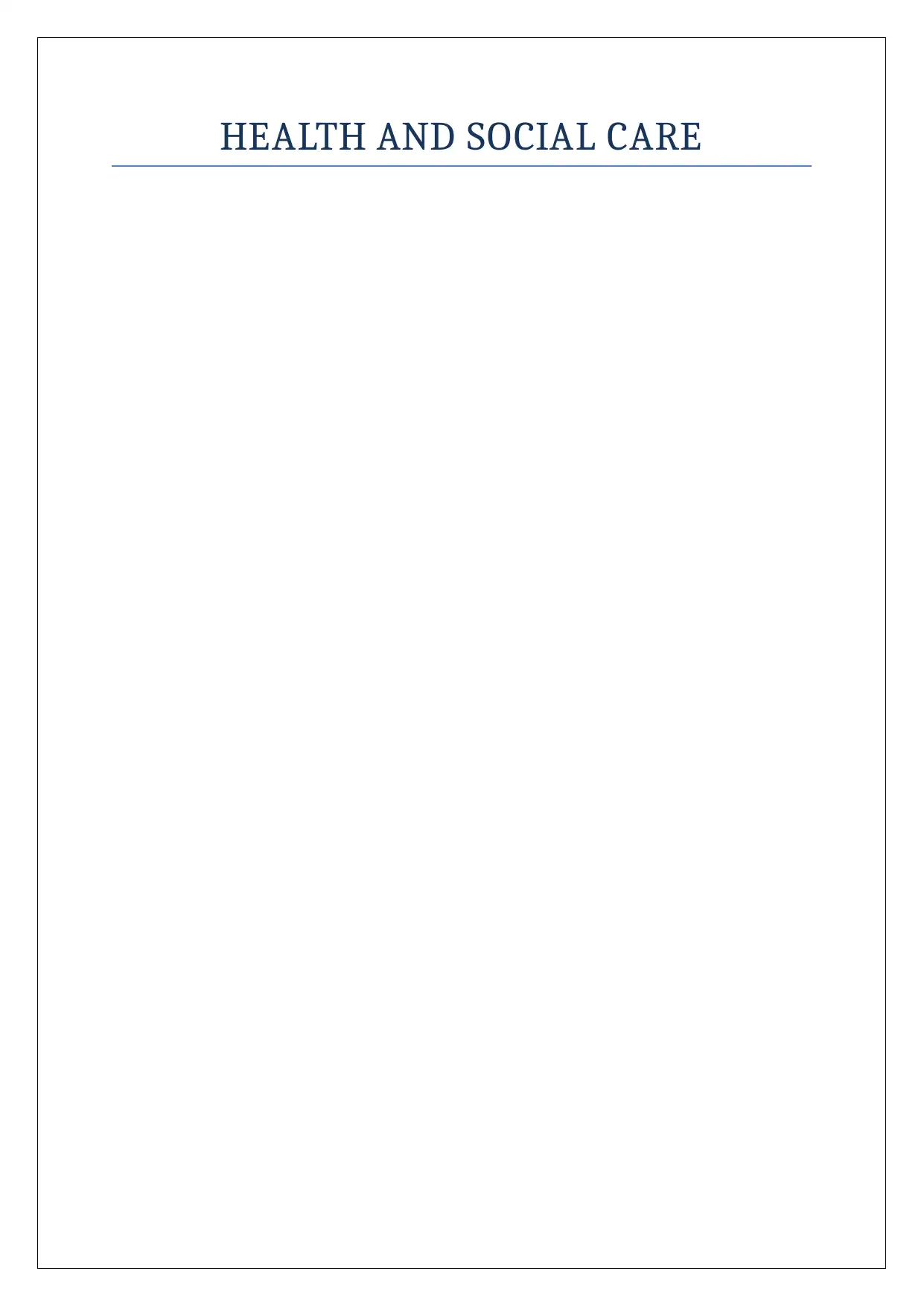
HEALTH AND SOCIAL CARE
Paraphrase This Document
Need a fresh take? Get an instant paraphrase of this document with our AI Paraphraser
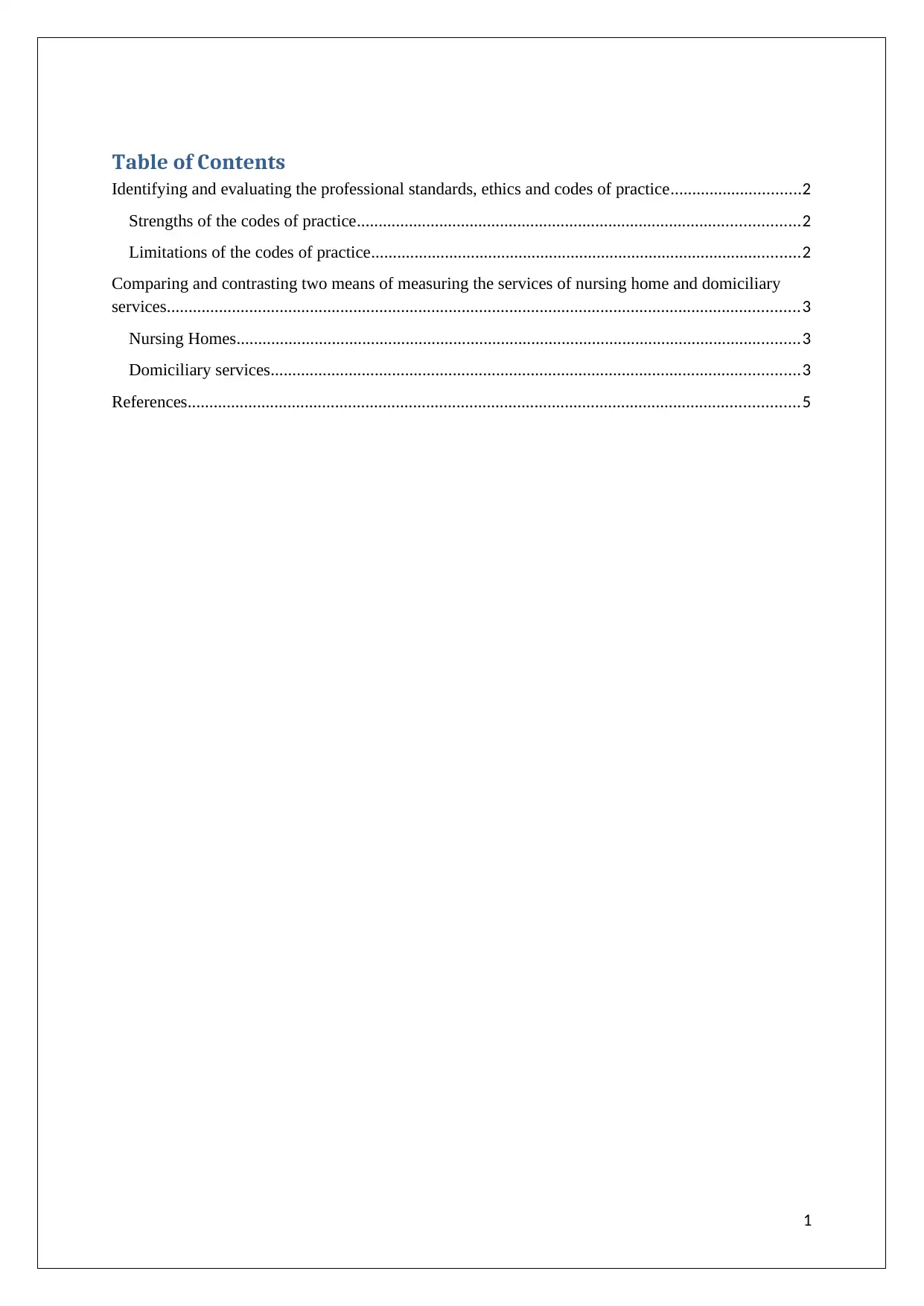
Table of Contents
Identifying and evaluating the professional standards, ethics and codes of practice..............................2
Strengths of the codes of practice......................................................................................................2
Limitations of the codes of practice...................................................................................................2
Comparing and contrasting two means of measuring the services of nursing home and domiciliary
services..................................................................................................................................................3
Nursing Homes..................................................................................................................................3
Domiciliary services..........................................................................................................................3
References.............................................................................................................................................5
1
Identifying and evaluating the professional standards, ethics and codes of practice..............................2
Strengths of the codes of practice......................................................................................................2
Limitations of the codes of practice...................................................................................................2
Comparing and contrasting two means of measuring the services of nursing home and domiciliary
services..................................................................................................................................................3
Nursing Homes..................................................................................................................................3
Domiciliary services..........................................................................................................................3
References.............................................................................................................................................5
1
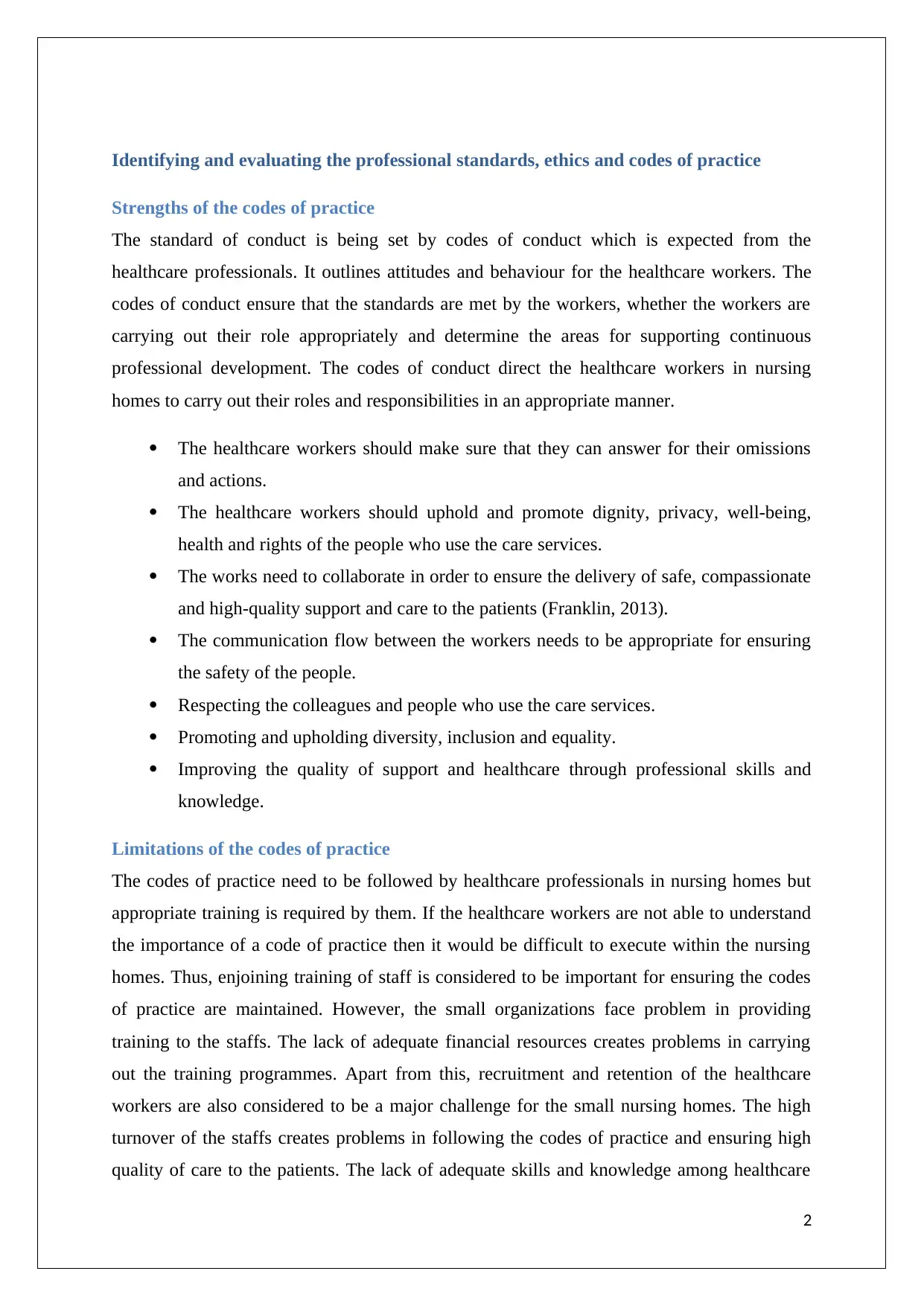
Identifying and evaluating the professional standards, ethics and codes of practice
Strengths of the codes of practice
The standard of conduct is being set by codes of conduct which is expected from the
healthcare professionals. It outlines attitudes and behaviour for the healthcare workers. The
codes of conduct ensure that the standards are met by the workers, whether the workers are
carrying out their role appropriately and determine the areas for supporting continuous
professional development. The codes of conduct direct the healthcare workers in nursing
homes to carry out their roles and responsibilities in an appropriate manner.
The healthcare workers should make sure that they can answer for their omissions
and actions.
The healthcare workers should uphold and promote dignity, privacy, well-being,
health and rights of the people who use the care services.
The works need to collaborate in order to ensure the delivery of safe, compassionate
and high-quality support and care to the patients (Franklin, 2013).
The communication flow between the workers needs to be appropriate for ensuring
the safety of the people.
Respecting the colleagues and people who use the care services.
Promoting and upholding diversity, inclusion and equality.
Improving the quality of support and healthcare through professional skills and
knowledge.
Limitations of the codes of practice
The codes of practice need to be followed by healthcare professionals in nursing homes but
appropriate training is required by them. If the healthcare workers are not able to understand
the importance of a code of practice then it would be difficult to execute within the nursing
homes. Thus, enjoining training of staff is considered to be important for ensuring the codes
of practice are maintained. However, the small organizations face problem in providing
training to the staffs. The lack of adequate financial resources creates problems in carrying
out the training programmes. Apart from this, recruitment and retention of the healthcare
workers are also considered to be a major challenge for the small nursing homes. The high
turnover of the staffs creates problems in following the codes of practice and ensuring high
quality of care to the patients. The lack of adequate skills and knowledge among healthcare
2
Strengths of the codes of practice
The standard of conduct is being set by codes of conduct which is expected from the
healthcare professionals. It outlines attitudes and behaviour for the healthcare workers. The
codes of conduct ensure that the standards are met by the workers, whether the workers are
carrying out their role appropriately and determine the areas for supporting continuous
professional development. The codes of conduct direct the healthcare workers in nursing
homes to carry out their roles and responsibilities in an appropriate manner.
The healthcare workers should make sure that they can answer for their omissions
and actions.
The healthcare workers should uphold and promote dignity, privacy, well-being,
health and rights of the people who use the care services.
The works need to collaborate in order to ensure the delivery of safe, compassionate
and high-quality support and care to the patients (Franklin, 2013).
The communication flow between the workers needs to be appropriate for ensuring
the safety of the people.
Respecting the colleagues and people who use the care services.
Promoting and upholding diversity, inclusion and equality.
Improving the quality of support and healthcare through professional skills and
knowledge.
Limitations of the codes of practice
The codes of practice need to be followed by healthcare professionals in nursing homes but
appropriate training is required by them. If the healthcare workers are not able to understand
the importance of a code of practice then it would be difficult to execute within the nursing
homes. Thus, enjoining training of staff is considered to be important for ensuring the codes
of practice are maintained. However, the small organizations face problem in providing
training to the staffs. The lack of adequate financial resources creates problems in carrying
out the training programmes. Apart from this, recruitment and retention of the healthcare
workers are also considered to be a major challenge for the small nursing homes. The high
turnover of the staffs creates problems in following the codes of practice and ensuring high
quality of care to the patients. The lack of adequate skills and knowledge among healthcare
2
⊘ This is a preview!⊘
Do you want full access?
Subscribe today to unlock all pages.

Trusted by 1+ million students worldwide
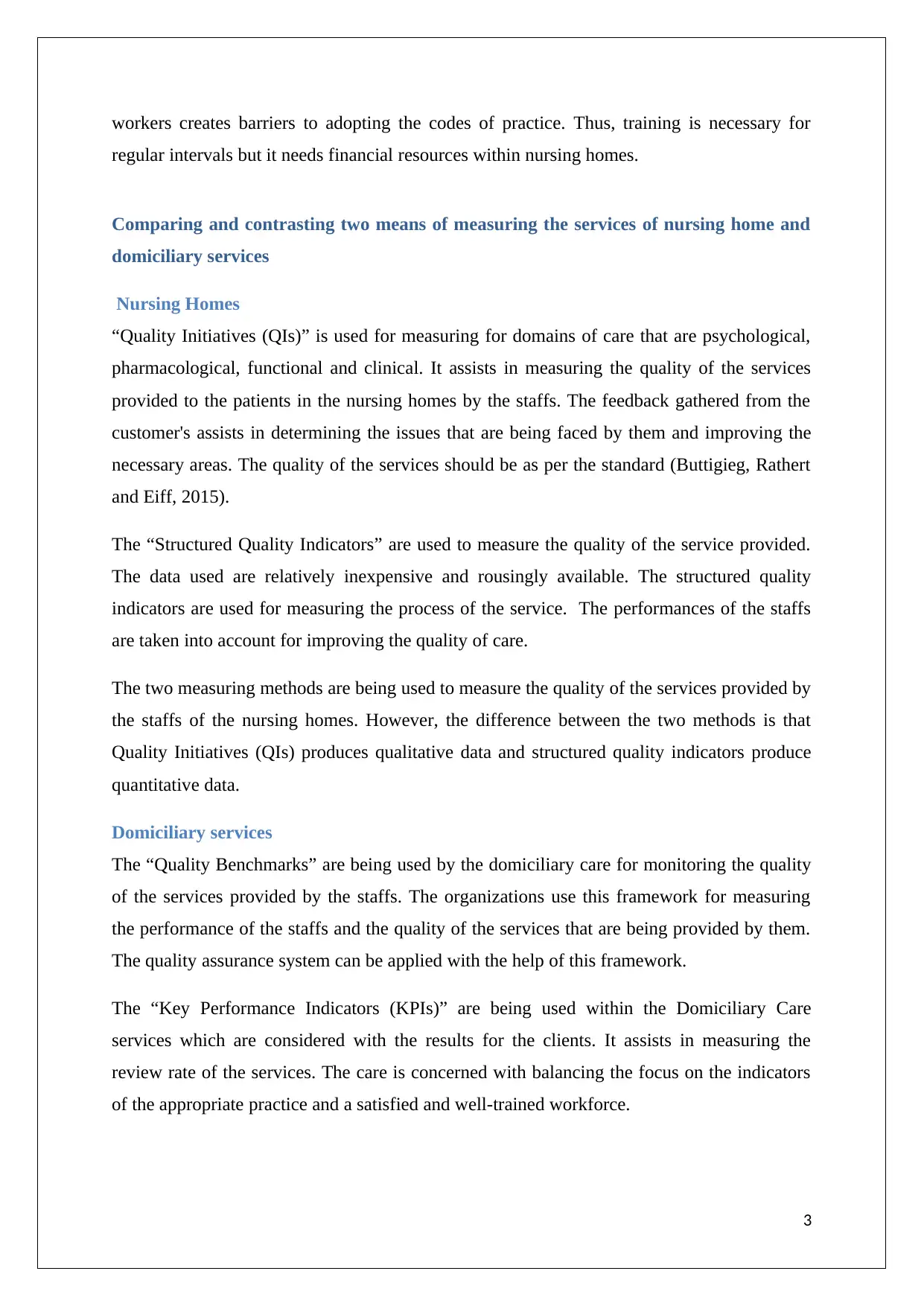
workers creates barriers to adopting the codes of practice. Thus, training is necessary for
regular intervals but it needs financial resources within nursing homes.
Comparing and contrasting two means of measuring the services of nursing home and
domiciliary services
Nursing Homes
“Quality Initiatives (QIs)” is used for measuring for domains of care that are psychological,
pharmacological, functional and clinical. It assists in measuring the quality of the services
provided to the patients in the nursing homes by the staffs. The feedback gathered from the
customer's assists in determining the issues that are being faced by them and improving the
necessary areas. The quality of the services should be as per the standard (Buttigieg, Rathert
and Eiff, 2015).
The “Structured Quality Indicators” are used to measure the quality of the service provided.
The data used are relatively inexpensive and rousingly available. The structured quality
indicators are used for measuring the process of the service. The performances of the staffs
are taken into account for improving the quality of care.
The two measuring methods are being used to measure the quality of the services provided by
the staffs of the nursing homes. However, the difference between the two methods is that
Quality Initiatives (QIs) produces qualitative data and structured quality indicators produce
quantitative data.
Domiciliary services
The “Quality Benchmarks” are being used by the domiciliary care for monitoring the quality
of the services provided by the staffs. The organizations use this framework for measuring
the performance of the staffs and the quality of the services that are being provided by them.
The quality assurance system can be applied with the help of this framework.
The “Key Performance Indicators (KPIs)” are being used within the Domiciliary Care
services which are considered with the results for the clients. It assists in measuring the
review rate of the services. The care is concerned with balancing the focus on the indicators
of the appropriate practice and a satisfied and well-trained workforce.
3
regular intervals but it needs financial resources within nursing homes.
Comparing and contrasting two means of measuring the services of nursing home and
domiciliary services
Nursing Homes
“Quality Initiatives (QIs)” is used for measuring for domains of care that are psychological,
pharmacological, functional and clinical. It assists in measuring the quality of the services
provided to the patients in the nursing homes by the staffs. The feedback gathered from the
customer's assists in determining the issues that are being faced by them and improving the
necessary areas. The quality of the services should be as per the standard (Buttigieg, Rathert
and Eiff, 2015).
The “Structured Quality Indicators” are used to measure the quality of the service provided.
The data used are relatively inexpensive and rousingly available. The structured quality
indicators are used for measuring the process of the service. The performances of the staffs
are taken into account for improving the quality of care.
The two measuring methods are being used to measure the quality of the services provided by
the staffs of the nursing homes. However, the difference between the two methods is that
Quality Initiatives (QIs) produces qualitative data and structured quality indicators produce
quantitative data.
Domiciliary services
The “Quality Benchmarks” are being used by the domiciliary care for monitoring the quality
of the services provided by the staffs. The organizations use this framework for measuring
the performance of the staffs and the quality of the services that are being provided by them.
The quality assurance system can be applied with the help of this framework.
The “Key Performance Indicators (KPIs)” are being used within the Domiciliary Care
services which are considered with the results for the clients. It assists in measuring the
review rate of the services. The care is concerned with balancing the focus on the indicators
of the appropriate practice and a satisfied and well-trained workforce.
3
Paraphrase This Document
Need a fresh take? Get an instant paraphrase of this document with our AI Paraphraser
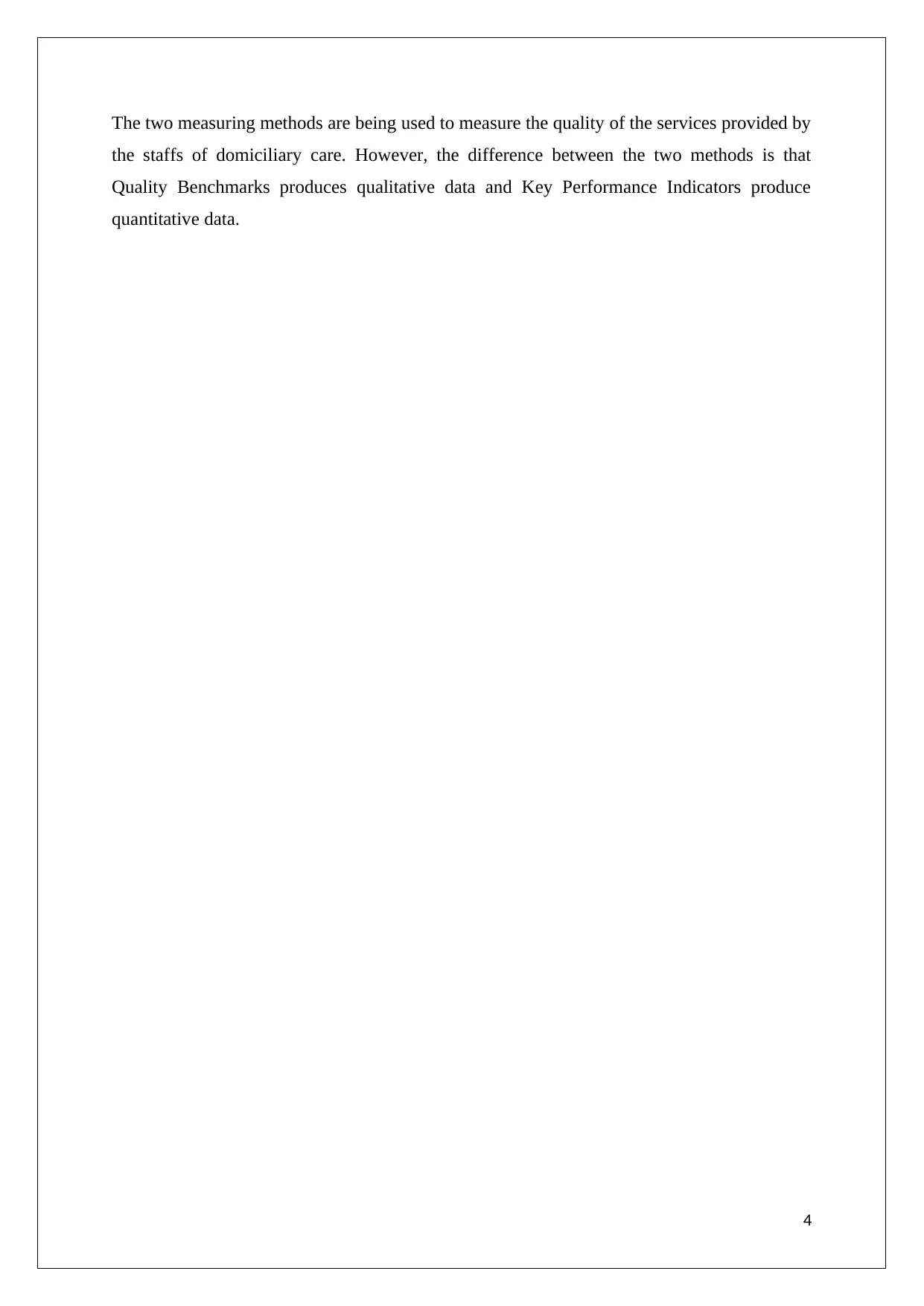
The two measuring methods are being used to measure the quality of the services provided by
the staffs of domiciliary care. However, the difference between the two methods is that
Quality Benchmarks produces qualitative data and Key Performance Indicators produce
quantitative data.
4
the staffs of domiciliary care. However, the difference between the two methods is that
Quality Benchmarks produces qualitative data and Key Performance Indicators produce
quantitative data.
4
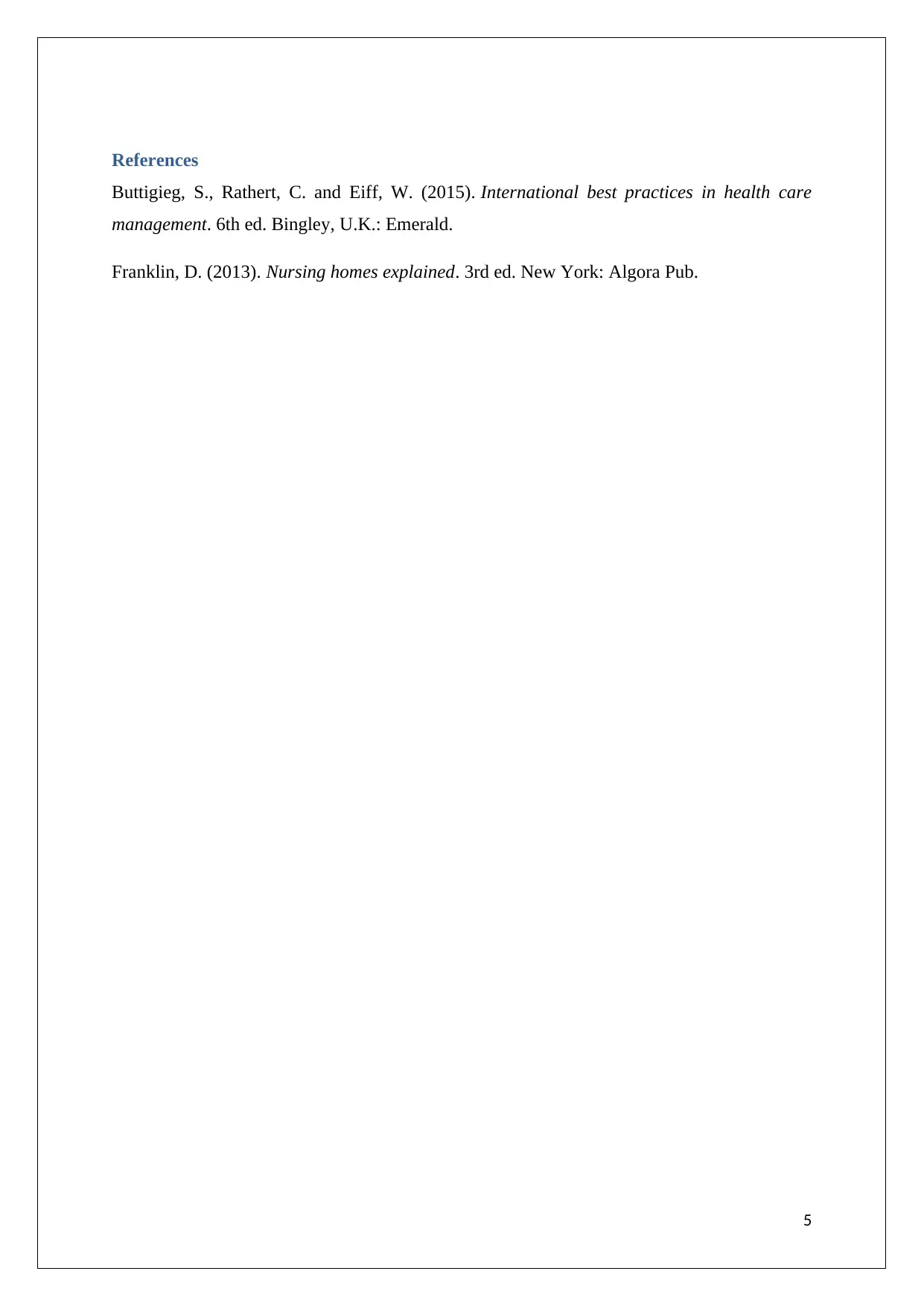
References
Buttigieg, S., Rathert, C. and Eiff, W. (2015). International best practices in health care
management. 6th ed. Bingley, U.K.: Emerald.
Franklin, D. (2013). Nursing homes explained. 3rd ed. New York: Algora Pub.
5
Buttigieg, S., Rathert, C. and Eiff, W. (2015). International best practices in health care
management. 6th ed. Bingley, U.K.: Emerald.
Franklin, D. (2013). Nursing homes explained. 3rd ed. New York: Algora Pub.
5
⊘ This is a preview!⊘
Do you want full access?
Subscribe today to unlock all pages.

Trusted by 1+ million students worldwide
1 out of 6
Related Documents
Your All-in-One AI-Powered Toolkit for Academic Success.
+13062052269
info@desklib.com
Available 24*7 on WhatsApp / Email
![[object Object]](/_next/static/media/star-bottom.7253800d.svg)
Unlock your academic potential
Copyright © 2020–2025 A2Z Services. All Rights Reserved. Developed and managed by ZUCOL.





